List of Schengen countries in 2017 will include 26 states, the total territory of which will be 4.5 million square meters. kilometers. The main advantage of this zone is any country that is part of the Schengen area.
In some cases, the border of one of the member countries may be closed due to important political gatherings and sporting events. In this case, the border may be closed for no more than 30 days, after the opening, free movement within the Member States will resume.
What is the purpose of the Schengen Agreement
With the advent of 2017, the list of Schengen countries will change somewhat. It will no longer include some states that are part of the European Union. Iceland, Norway and Switzerland remain free to cross. But the UK and Ireland require passport control to cross their border.
States such as Romania, Cyprus, Bulgaria are just waiting to join the Schengen Union. Today, entry into these countries will not be difficult, but when leaving, travelers will have to experience all the delights of passport control.
In addition, there are some other states, the so-called Setellites. They did not sign the Schengen agreement, but are included in its zone. These are countries such as Monaco, San Marino, the Vatican and Andorra.
The very first countries that decided to create such a zone and sign the corresponding agreement were the Netherlands, France, Luxembourg, Germany and Belgium. This agreement was signed in 1995 and is still in force today.
Countries that are part of the Schengen Agreement in 2017
The list of countries that will be part of the Schengen area is already known. This question is currently the most relevant among Russians planning to travel abroad, so we have tried to provide a detailed list in order to dispel all doubts about a particular country.
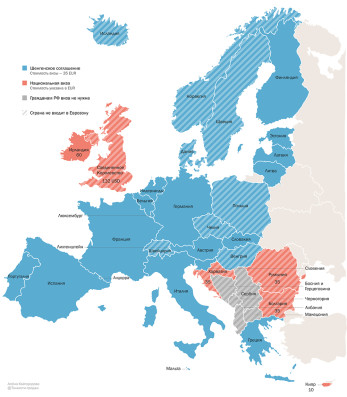
- France (capital Paris)
- Belgium (capital Brussels)
- Germany (capital Berlin)
- Luxembourg
- Austria (capital Vienna)
- Netherlands (capital is Amsterdam)
- Spain (capital Madrid)
- Denmark (capital Copenhagen)
- Malta (capital Valletta)
- Greece (capital Athens)
- Portugal (capital Lisbon)
- Hungary (capital Budapest)
- Iceland (capital Reykjavik)
- Norway (capital Oslo)
- Italy (capital Rome)
- Estonia (capital Tallinn)
- Liechtenstein (capital Vaduz)
- Latvia (capital Riga)
- Poland (capital Warsaw)
- Slovenia (capital Ljubljana)
- Lithuania (capital Vilnius)
- Slovakia (capital Bratislava)
- Finland (capital Helsinki)
- Czech Republic (capital Prague)
- Switzerland (capital Bern)
- Sweden (capital is Stockholm).
Rules for obtaining a Schengen visa
Getting a Schengen visa isn't as hard as some people make it out to be. Those who know the basic rules for obtaining this document will be able to issue it in just a short period of time. Try to correctly approach this issue and then you will succeed.
- Documents must be submitted to the consulate of the country where you plan to go first. If you plan to travel to several countries at once, then go to the consulate of the country where you are going to stay for a long time. This is the basic rule of Schengen. The first entry rule does not mean that you have to enter Spain first. After all, you can get to it in transit, through Poland or Germany.
- Carefully collect the entire list of documents. You should not listen to people who often collect information at the gates of the consulate. It is better to get information from trusted sources, for example, from the official website of the selected consulate. There is a detailed list of documents required for obtaining a Schengen visa.
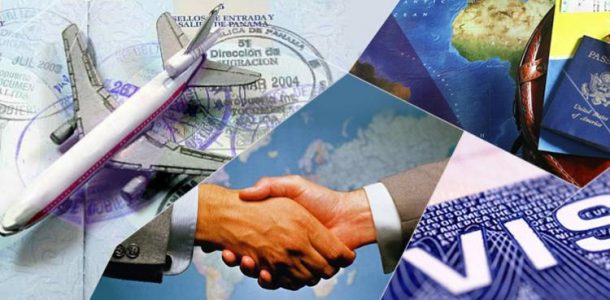
- If you don't have official work You will still be given a visa. When filling out certificates, you can freely write that there is no work, but money is found. Believe me, the consulates work knowledgeable people and they understand that it is much more difficult to get a legal job now than it was a few years ago.
- Try to provide the authorities with as much information about yourself as possible. Tell us about the purpose of your trip, which cities you plan to visit, in general, communicate more. Then you will be more likely to receive the coveted document in as soon as possible. There are times when the consulate may ask for your detailed itinerary, as well as ask if you booked tickets. Do not hide anything, speak only the truth and you will be heard.
- Rest assured that you are worthy of a visa. Very often, among people who want to apply for a visa, there is a lack of self-confidence and some kind of incomprehensible feeling of guilt. If everything is in order with your documents, they simply do not have the right to refuse you. Those who plan frequent visits to the Schengen countries can immediately apply for a multi-visa.
Once you receive this document, you will be able to travel anywhere in the Schengen area. Do not forget to carefully plan the route so that there is no confusion on the road. Also, stock up on convenient and practical things so that you do not waste your savings on them once again. And, of course, keep a good mood for the whole trip, and you will definitely want to repeat a similar tour after a while.
The Schengen Agreement entered into force in March 1995, then only within the five powers it was possible to move without going through passport control. Since then, the borders of the Schengen Union have changed several times, and The list of Schengen countries in 2017 already includes 26 states.
Schengen area
Many travelers are interested in which countries the Schengen visa applies to. After all, if you plan a long trip around Europe, you should find out which countries are included in the Schengen and which require a national visa.
It is worth considering that the Schengen countries are not necessarily members of the European Union (Iceland, Liechtenstein, Norway and Switzerland are not members of the EU). In turn, Ireland and the UK signed the Schengen agreement and are members of the EU, but left passport control. That is, to visit them, tourists need a separate document - a national visa.
Very soon, a single visa-free space may expand, for more than a year other EU members have been striving to enter it: Bulgaria, Croatia, Romania, Cyprus. The exact date of signing the agreement and the entry of new participants has not been announced. Now these countries are open to entry on a Schengen visa, but internal national visas are also valid. At the same time, the area of validity of the internal visa of southern Cyprus may extend to Bulgaria, Croatia, Romania.

Which countries are included in the Schengen area in 2017
The list of countries included in the Schengen area in 2017 is as follows:
- Austria
- Belgium
- Hungary
- Germany. It has the largest population, with almost 82 million people living here. The territory of Büsingen am Hochrhein is not included in the Schengen zone.
- Greece (except Athos)
- Denmark (with the exception of two autonomous regions - Greenland, Faroe)
- Iceland
- Spain (without Melilla, Ceuta)
- Italy (except Levigno enclave)
- Latvia
- Lithuania
- Principality of Liechtenstein. The principality is the smallest Schengen state, its area is only 160 km²
- Luxembourg
- Malta
- Kingdom of the Netherlands (exception - Caribbean Netherlands, Sint Maarten, Curaçao, Aruba)
- Norway (except Bear Islands, Svalbard)
- Poland
- Portugal
- Slovakia
- Slovenia
- Finland
- France (without overseas possessions). It is the largest Schengen state in terms of length, the area of \u200b\u200bthe country is 674,843 km². Joined the agreement in 1985
- Czech
- Switzerland
- Sweden
- Estonia
If you are interested in which countries need a Schengen visa, please note that in addition to the above list of countries on a Schengen visa, you can visit some other states. San Marino, the Vatican, the Principalities of Monaco and Andorra, which did not sign the Schengen agreement, are also covered by the Schengen zone. However, if you have a single-entry Schengen visa after visiting, for example, Andorra, certain difficulties may arise. The fact is that Andorra is not part of the Schengen Union. That is, when entering the principality, a person actually leaves the territory of the union, upon returning to which he needs a second visa.
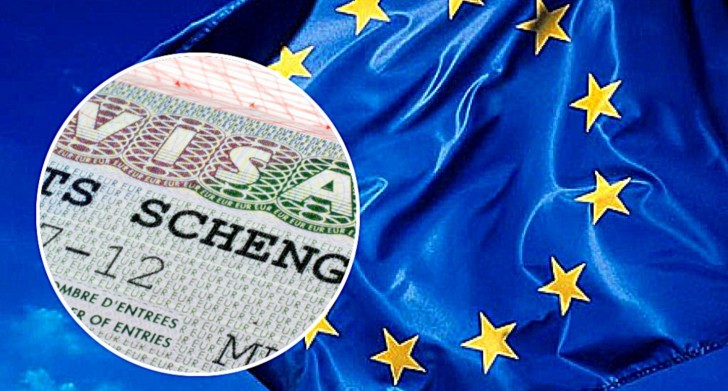
The most popular Schengen countries among tourists this year
The list of Schengen countries in 2017, where the largest influx of travelers is expected, is as follows:
Features of movement between the states of the Schengen agreement
Even if you are going to visit only countries that require a Schengen visa in 2017, in some cases you should prepare for certain difficulties. Due to the influx of emigrants, in order not to spread crime, some Schengen countries in 2016 introduced special border control:
- Austria - from Slovenia and Hungary
- Germany - on the border with neighboring Austria;
- Denmark - on the border with Germany, as well as in seaports where German ferries arrive;
- Sweden - Öresun Bridge, in the southern and western ports;
- Norway - in seaports where ferries arrive from Denmark, Germany, Sweden.
- Hungary has built a fence on the border not only with Serbia and Croatia, which have not yet formalized entry into the Schengen Union, but also with Slovenia, which has signed the Schengen agreement.
Thus, movement within the Schengen area will only be relatively free, and it will become even more difficult for illegal immigrants to enter the Schengen area.
The Schengen countries guarantee free movement within the Schengen area for both EU citizens and visitors who are in the united Europe on legal terms. At the same time, all Schengen countries carry out joint control of visitors. If a tourist has previously violated passport control in any of the states of the Schengen area, information about this should automatically be distributed to the databases of all Schengen members. In the future, when issuing an entry permit to any of the powers participating in the Schengen Agreement, this person may be refused.
Schengen Area
Addresses of the embassies of the Schengen countries
Types of Schengen visas
Consular fee
Schengen visa extension
Appeal against refusal of a Schengen visa
Schengen Information System
The difference between the countries included in the Schengen area and the countries that have signed the Schengen agreement
All Schengen countries except Iceland, Norway and Switzerland are members of the European Union. The list of Schengen countries is also supplemented by Great Britain, Ireland, Bulgaria, Cyprus and Romania. However, the UK and Ireland are not Schengen countries, they signed the Schengen agreement, but did not abolish passport control. As for the last three countries (Bulgaria, Cyprus and Romania), they are also not yet included in the Schengen countries, since passport control when crossing the borders of these states is only planned to be canceled. So, the countries of the Schengen agreement in 2010 will not change their composition.
Thus, citizens of third countries, having received a visa to one of the states belonging to list of schengen countries can visit all Schengen countries on the basis of this visa. In general, citizens of any country of the Schengen area, persons with a visa of any country of the Schengen agreement, as well as citizens of third countries with an agreement on visa-free regime with any state that is part of list of schengen countries.
However, for citizens of states that are not included in the list of Schengen countries, a number of restrictions are provided. For example, a visa must be requested for the Schengen country that will be the main place of stay. It is also desirable to enter the countries of the Schengen zone through the country that issued the visa. If transit cannot be avoided, you should be prepared for the fact that you will have to explain in detail to the customs officers of another Schengen country about the purpose of the trip.
Countries in which they operate Schengen visas, carry out joint control of incoming tourists. If a tourist violated passport control in one of the Schengen countries, data about it will necessarily fall into a single computer base, which may entail a ban on entry into any Schengen countries. The same applies to offenses committed while visiting any state representing the Schengen countries. For each specific tourist, this may threaten that the next time you try to obtain a Schengen visa, a refusal will follow.
Assistance in obtaining a Schengen visa to any of the countries of the agreement
To obtain a Schengen visa, you must contact the embassy of the main host country. Our agency will be happy to help you get a Schengen visa to any country. The rules for obtaining a Schengen visa are established by the participating countries in different ways. However, the basic requirements, as a rule, include filling out the Schengen application form, providing identification documents confirming the purpose and route of the trip, and the financial situation of the visa applicant. With a complete list of documents required for a visa and the terms for consideration and issuance of a Schengen visa of any Schengen country, please visit our website. Here you can also find full list embassies of the Schengen countries and their contact details.
☎ (495) 943-49-83, +7 (926) 78 777 21
Travel Bureau TURNADO has been operating in the travel services market for more than 5 years, and successfully helps tourists from Moscow and the REGIONS to apply for visas to any Schengen Union countries. We offer you our services and guarantees for obtaining visas, as well as any visa assistance and advice on visa issues! Below are the prices and the list of documents for visas:
We will issue you Schengen visas
(short and multi) for citizens of the CIS countries and the Middle East, as well as Belarus!!!
- Guarantee! Processing time from 2 days. Minimum documents!
- Italy - multivisa for a year 600 Euro
- Italy - multivisa for 3 years 1200 Euro
- Italy - multivisa for 5 years 1800 Euro
Lithuania - Schengen multivisa for a year 300 Euro
Lithuania - Schengen multivisa for 3 years 600 Euro
Urgent Schengen Visa for 1 year (90 days in half a year) - registration in 1 day or less! Cost as of 11/20/2014 - 1000 Euro.
Passport + photo = multi visa! No presence, no hotel reservations.
Schengen visa. List of countries. List of documents
SCHENGEN VISA
The purpose of the Schengen Agreement is the free movement of citizens within the borders of the Schengen area, including foreign tourists and everyone who enters one of these countries on a Schengen visa.
Schengen countries for 2014:
Austria, Denmark, Belgium, Hungary, Germany,
Greece, Latvia, Lithuania,
Iceland, Spain, Italy, Liechtenstein,
Malta, Portugal,
Slovakia, Slovenia,
Finland, France, Sweden,
Estonia, Czech Republic, Poland,
Switzerland.
Obtaining a visa to one of these countries gives you the right to free movement within all countries participating in the Schengen agreement.
If you have a national visa of a Schengen country, which gives the right to enter and stay only in this country, visiting other Schengen countries is illegal and entails irreversible consequences, up to immediate deportation and a possible ban on subsequent entries to all Schengen countries.
The decision to issue a national visa can be made, for example, if you indicate in the application form that you are not going to travel outside the country.
Entry to Cyprus, Croatia, Bulgaria and Romania on a Schengen visa
Citizens of the Russian Federation and the CIS who have valid Schengen visas of category C in their passports (single, double, multiple) , long-term visas of category D or a residence permit issued by one of the Schengen countries, and those who have already entered Schengen on them can stay in Cyprus, Croatia and Bulgaria during the period of validity of these visas (the period of stay is limited to the number of remaining days on the visa). In this case, a national visa is not required.
Types of Schengen visas
There are several types of Schengen visas: A, B and C. Type A and B visas are issued to people passing through the Schengen countries in transit, visa type C (guest, tourist, business visa) is received by visitors to the country.
Airport transit visa(type A)
A type A visa is issued to a person making an air flight in transit through a Schengen state. It gives the right to be in the transit zone of the airport of arrival, but does not allow you to move around the country.
Schengen transit visa (type B)
A type B visa is issued to a person who travels through the territory of one or more Schengen states on any type of land transport. Its validity period is from one to five days.
Schengen short stay visa (type C)
A type C visa is issued if a person enters the Schengen territory for a period not exceeding 90 days. It comes in several subcategories: C1 visa allows you to stay in the Schengen area for up to 30 days; C2 and CZ visas give the right to stay in the Schengen countries for up to 90 days, while C2 is valid for six months, CZ for a year; C4 visa also has a limit on the duration of stay in the Schengen countries in the amount of up to 90 days, but its validity varies from one to five years. Each of the listed visas has several types: Single/double Such a visa gives the right to enter the territory of the Schengen zone through the country whose embassy issued the entry permit. If a tourist tries to enter through another Schengen country, when crossing the border he will have to explain why he did not apply for a visa of this particular state. In the case of an unconvincing answer, entry may be denied. On a single-entry visa with the right to attend for 30 days, you cannot come for 20 days, and then for another 10 - the entire period must be used immediately. Double entry visa for the same period allows you to divide it into two periods. You can leave the Schengen from any country that has signed the relevant agreement. Multiple (multivisa)
Such a visa is also issued by one of the countries of the Schengen Agreement, but under it a citizen has the right to enter any state that is part of the bloc. Typically, multiple entry visas are issued for a period of a month to a year, but a tourist can stay abroad for a total of no more than 90 days.
An approximate list of documents for obtaining a Schengen visa
*There are differences for each country*
. international passport
(valid for at least 3-6 months from the start of the tour) without valid Schengen visas.
If the child is entered in the passport and goes on a trip with his parents, upon reaching the age of 6, a photograph of the child in the parent's passport, certified by the OVIR or the Ministry of Foreign Affairs, is required.
. Color photographs
3.5 x 4.5 (2 pcs. - for each participant of the trip, except for children entered in the passport), on an even, light background. Matte photo. The image must be crisp and clear. The head in the photograph should occupy 70-80% of the entire image. Some countries require 3x4 cm photos.
. Questionnaire
(filled in at the agency, strictly according to the model) with the obligatory indication of home, work and contact numbers, as well as permanent residence addresses.
. Help from the place of work
on a letterhead indicating the address and phone number of the organization, position, salary, vacation period of the employee, two signatures of the head and chief accountant).
For students - a certificate from the place of study or a photocopy of a student card.
. Reference
(not older than six months) about buying currency(copy) at the rate of 50 Euro per person per day, including children, or a copy of a credit card with a bank statement with a stamp and signature of the bank. The requirement varies significantly by country - from optional to 100 euros per day per person in Switzerland.
For the unemployed (pensioners, housewives, students) - a statement from the person paying for the trip and a certificate from the sponsor's place of work indicating the position and salary.
. Photocopy
in A4 format, all pages of a valid passport and other international passports, valid or cancelled.
. Photocopy
in A4 format, all pages of the internal passport.
If you have a second or more international passports (valid), present them as well.
Copy of birth certificate for children under 18.
If a child (under 18) travels with one of the parents, a copy of the notarized consent to the child's export from the other parent or from both parents is required if the child travels with another relative or accompanying person (indicating the country, date of travel, name hotel, its address and phone number and passport details of all persons involved in the power of attorney). "Consent" is done on the personal letterhead of a notary, on stamped paper. Apostille is not required. A copy of the power of attorney is accepted./
Medical insurance (photocopy). If the tourist has his own insurance, it must be for at least 30 days (requirement of the Spanish consulate).
A copy of the marriage certificate for spouses with different surnames and if they have one currency certificate for two.
Photocopies of documents (certificate of a new marriage, divorce, death, document of a single mother) proving the relationship of children and parents, if they have different surnames.
Dealing with rejections difficult cases, Schengen visa, multi-Schengen, urgent Schengen visa, visa to Italy, visa to France, visa to Germany, visa to Poland, visa to Lithuania,
Currently, there are categories of states that have decided to simplify the process of checking passports and control the movement of immigrants.
In addition, they decided to simplify the rules for entry and movement around the area. This category includes the main European representations, united by a single Schengen area.
The residents are able to cross the border between these states with the complete absence of any possible restrictions.
The main representatives of the community include the following states:
- Austria
- Belgium
- Hungary
- Germany
- Greece
- Denmark
- Iceland
- Spain
- Italy
- Latvia
- Lithuania
- Luxembourg
- Malta
- Netherlands (Holland)
- Norway
- Poland
- Portugal
- Slovakia
- Slovenia
- Finland
- France
- Czech
- Switzerland
- Sweden
- Estonia
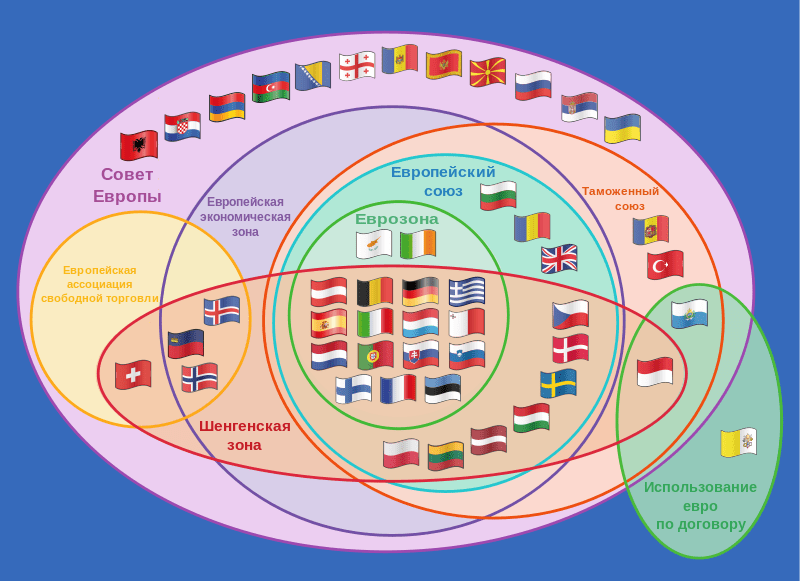
CountriesEuropean Community:
- Austria
- Belgium
- Bulgaria
- UK
- Hungary
- Germany
- Greece
- Denmark
- Ireland
- Spain
- Italy
- Latvia
- Lithuania
- Luxembourg
- Malta
- Netherlands
- Poland
- Slovakia
- Slovenia
- Portugal
- Romania
- Finland
- France
- Croatia
- Czech
- Sweden
- Estonia
Members of the Eurozone:
- Austria
- Belgium
- Germany
- Greece
- Ireland
- Spain
- Italy
- Latvia
- Lithuania
- Luxembourg
- Malta
- Netherlands
- Portugal
- Slovakia
- Slovenia
- Finland
- France
- Estonia
Citizens of countries outside these communities must obtain permits for entry.
Types of Schengen visas
A person who is going to visit one of the above zones is recommended to study main types of entry permits.
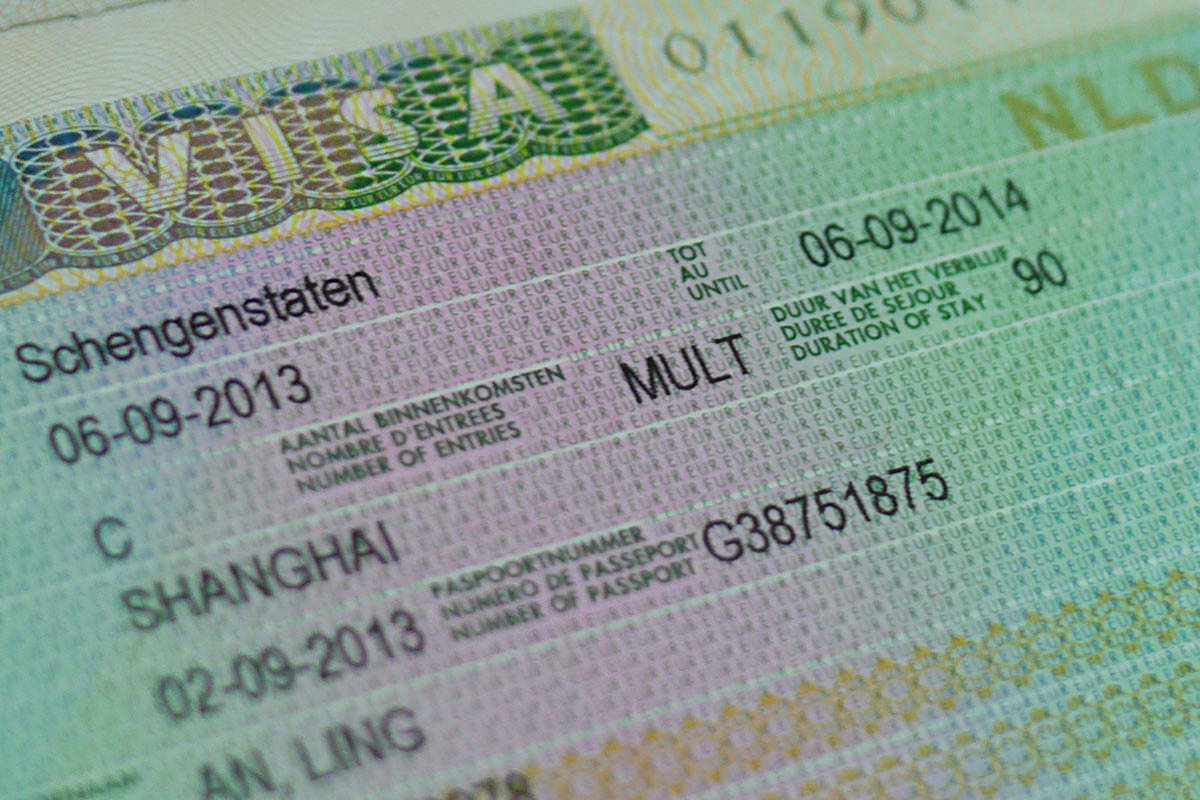
Type "A": airport: this visa allows presence in the area of the local terminal. Other types of movement are strictly prohibited.
Type "B": granted to a person moving through a foreign region on public transport. Its validity period is from 1 to 5 days.
Type "C": is provided to certain categories of citizens for free entry into the region. These include: guests, tourists and business travelers.
It is also called short term. Its effect is less than 90 days.
For guests, this visa is issued only if there is an invitation from a person who is a citizen of this country.
A tourist visa is issued only for those citizens who carry out tourist trips. Other activities for this category of citizens are prohibited.
It should be remembered that it has some limitations. For example, for the import of funds. Information about this can be obtained by contacting the consulate in person.
Its validity period is from 15 to 90 days.
Businessmen are granted the right to enter only for the period of business meetings and negotiations. Registration of the entry visa is carried out by the inviting company.
It must be remembered that this visa is not required for persons with a visa-free entry type, i.e. belonging to one of the above countries.

In addition, the entry visa also has the following types:
- C1 - stays in the country for up to 30 days;
- C2 and C3 - up to 90 days at 6 and 12 months;
- C4 - presence up to 90 days, however, valid from 1 to 5 years.
It should be remembered that in cases of the likelihood of termination of stay in the country or a return planned during the trip, it must be indicated in the process of filling out documents.
- A multivisa ensures entry only through the state that issued the permit. Its duration is 180 days, as well as 1 and 3 years. Features of its provision and use depend solely on individual circumstances and on the state from which the entry is made.
Restrictions: it provides multiple entry, but it should not exceed 90 days.
Citizens can make multiple entries into the country until the limit for visiting is spent.
One of the most common visas is the C1 type. Its advantages are based on the ease of obtaining, since the rest are very difficult to obtain.
If this visa is obtained, a multiple-entry visa may be granted on the next visit.
Type "D": carries out entry for a long time and stay in the country for more than 90 days.
It also provides for the provision of residence in the Schengen area and any movement within the area lasting no more than three months.
Type ofFTD: issued only to vehicles moving from the borders of the Russian Federation and to Kaliningrad.
Type ofLTV: granted for a short time when traveling within the country whose consulate issued it.
The state can apply such a visa in its area at any time it needs and also cancel it without hindrance.
How to apply for a Schengen visa?
Documents to be presented at the embassy:
- Foreign passport (real and those that have expired);
- 3 photos;
- Accounting documents;
- Certificate from the bank on the status of the personal account;
- Papers on family and social status and on the position of the individual in society;
- Copies of all pages of an identity document.
Addresses of the embassies of the Schengen countries:
- Austrian: Starokonyushenny lane, 1
- Belgian: st. Malaya Molchanovka, 7
- Republic of Bulgaria: st. Mosfilmovskaya, 66
- Great Britain: Bolshoy Savvinsky lane, 12, building 18
- Republic of Hungary: st. Mosfilmovskaya, 62
- Germany: Leninsky prospect, 95 "A", (entrance from the side of Akademika Pilyugin street)
- Greece: Trubnikovsky lane, 23
- Spain: Bol. Nikitskaya st., 50/8
- Incoming Kingdoms of Spain: Stremyanniy Lane, 31/1
- Office accepting documents to Spain: Cow's Wall 1A, building 2
- Italy: Yakimanskaya Embankment, 10
- Canada: Starokonyushenny lane, 23
- Cyprus: Povarskaya st., 9
- Republic of Lithuania: Borisoglebsky per. ten
- Maltese: st. Koroviy Val, 7, apt. 219
- United States of Mexico: B. Levshinsky lane, 4
- Netherlands: Kalashny lane, 6
- Norway: st. Povarskaya, d.7
- Republic of Poland: st. Klimashkina, 4
- Portugal: Grokholsky per., 3/1
- America: Bolshoi Devyatinsky lane, 8
- Finland: Kropotkinskiy pereulok, 15-17
- France: st. B. Yakimanka, 45
- Center of France: st. Marxistskaya, 3, building 2
- Czech Republic: st. Y. Fuchik, d.12/14
- Switzerland: trans. Ogorodnaya Sloboda, 2/5
- Sweden: Mosfilmovskaya st., 60.
Consular fee
When applying for it at the embassy: is 35 Euro
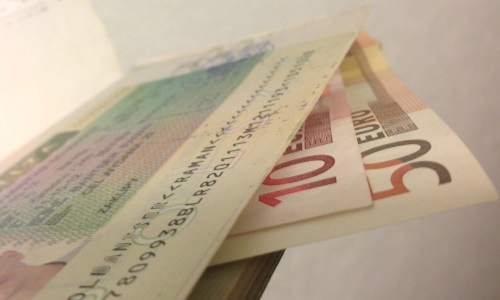
The following are exempted from its payment:
- Citizens who are related to any citizen from the Schengen countries
- People crossing the border for health purposes
- People belonging to the category of persons with limited liability, as well as persons accompanying them
- Students and other persons crossing the border for educational purposes
Consular fee at the visa department or consulate: in addition to the usual consular fee, a service fee is also paid additionally: its amount depends on the country of visit:
- Greece: 880 rubles, through a travel agency - 70 Euro; child – 25 Euro
- Spain: 1180 rubles, with urgent registration an increase of 55 Euro
- Italy: 1350 rubles
- Germany: category "D" - 30 Euro, category C - 35 Euro
- France: 1124 rubles
- Czech: 35 Euro, urgently 70 Euro. Issued exclusively at the embassy
- Bulgaria: 54 EUR
- Finland: At the Moscow Embassy 21 Euro, in other cities 25 Euro
- Cyprus: Since 2016, the issuance of electronic and regular provisions has been allowed. With independent registration, the procedure is free, in travel agencies it is 100 Euro
Travel agencies: two fees are paid, plus the services of a travel agency.
Extension of the Schengen visa
If the visa has expired, and staying in the country is required for certain circumstances, citizens can apply for an extension of the visa.
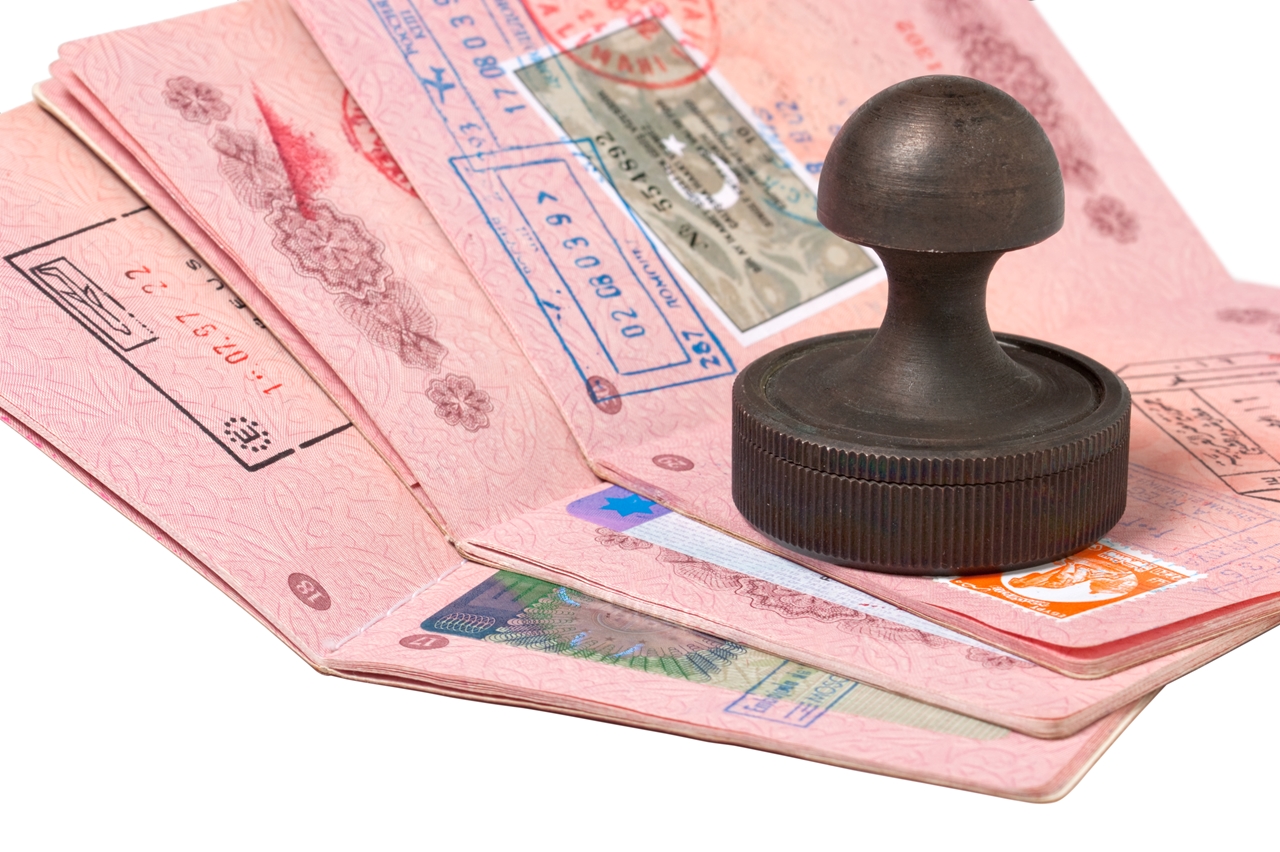
For this you need:
- Find out the name and opening hours organization dealing with this issue.
- Give a clear and concise reason extensions: force majeure and emergency circumstances related to the illness of the citizen himself or a close relative
- Collect documents confirming the right to extend the visa
- Apply accordingly on the extension of the visa, as well as a passport. In addition, you must provide valid visa and renewal documents. The extension of the visa is carried out for a period not exceeding 90 days. The appeal procedure takes 10 working days
- In case of refusal need to issue new entry documents
Appeal against refusal of a Schengen visa
There are precedents when the state refuses extradition.
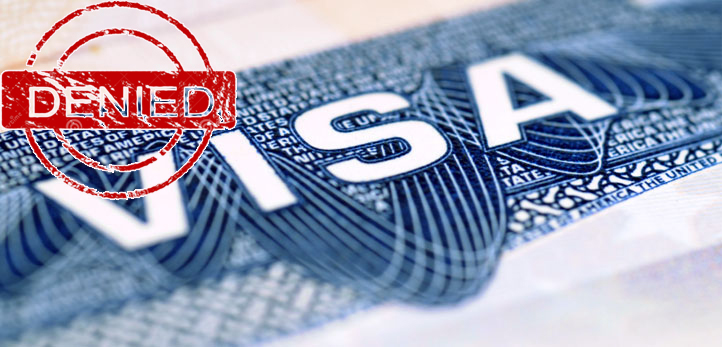
What is causing the rejection:
- Misuse valid entry documents: the consulate strictly controls the flow of incoming and outgoing tourists;
- Security threat and violation of agreements between states
- Submission of false information about a citizen when applying for a visa
- Expired personal documents
- Purpose of visiting the country is permanent residence
Upon receipt of a refusal, a citizen should write documents for appeal. Its registration must be carried out in accordance with the laws of the country of entry.
Each country has its own procedure for filing an appeal and specific competent authorities considering them:
- Belgium: the complaint is sent to the State Council in the form of a petition, written in a certain form, executed by registered mail within 30 days from the date of receipt of the letter of refusal.
- Denmark: documents are submitted without any specially established procedures to the Ministry of Immigrant Affairs. The document must indicate personal data, permanent place of residence, all data on the written application. In case of repeated refusal, the document is submitted to the Danish court.
- Finland: decision to refuse is not subject to change
- France: the reasons for refusal are not subject to publicity if the citizen is in kinship with another person residing in the territory of a European state, as well as if there is a notice of violations in the information center. In this case, the tourist draws up a complaint to the Commission. Papers to appeal the decision are submitted no later than 60 days from the date of the decision to refuse. The commission, when considering, may refuse extradition or give letters of recommendation to the Minister of Foreign Affairs. When a negative decision is made by the Commission, a citizen may submit documents for appeal no later than 2 months from the date of receipt of the decision to the State Council. The Council of State does not have the right to decide on the issuance or refusal of a visa. Considering that the appeal made by the Commission is accepted, the Minister for Foreign Affairs shall decide otherwise. Papers are also submitted to the State Council, provided that the previous documents of appeal have not been considered.
- Germany: documents are submitted to the authorized bodies that are reviewing the verdict. Papers are provided within one month. All competent authorities can be found at the Embassy.
- Italy: the competent authorities notify of the negative opinion in a language accessible to the applicant. A citizen within 60 days has the right to apply for a review of the decision to the Administrative District Court of the Lazio region.
- Luxembourg: a request for a review of the case is submitted to the Administrative Tribunal within three months. You should be aware that this body does not make decisions on the issuance of visas. If a negative conclusion is issued again, the case is returned for reconsideration.
- Netherlands: Appeal papers are submitted within one month.
- Norway: documents for revision are submitted within three weeks. If the paper is submitted to the consulate, then for its consideration it is sent to the Office of Foreigners.
- Spain: the duration of the appeal is two months. Papers are filed at the Tribunal Superior de Justicia de Madrid.
- Sweden: verdicts are considered unilaterally and a cancellation complaint cannot be filed.
Schengen rules
These rules are based on the fact that any person who has received the opportunity for freedom of movement in another country must comply with the strict implementation of the rules and regulations provided for in that country by law.
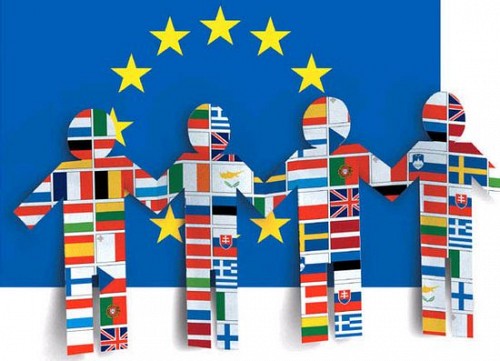
Rules:
- Initial entry only through the country that issued the visa.
- When a citizen is in several places of stay A visa is obtained where the stop takes the most time. The main country is clarified before the process of processing any documents.
- If you have a multivisa for a period of 2180 days, the period of a single stay of a citizen should not exceed 90 days.
New rules
In 2015, the Visa Information System was created, containing information about all citizens entering and moving in the Schengen area.
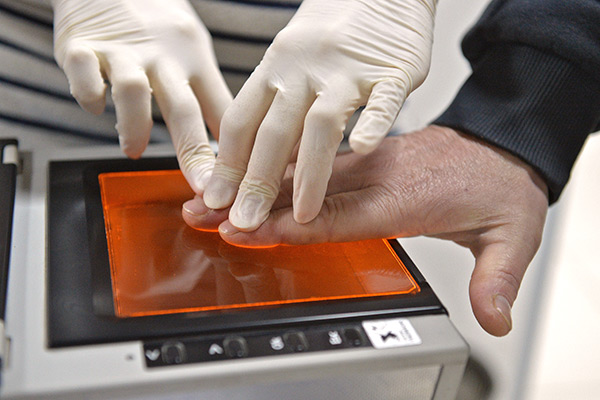
The new rules require:
- bring photos High Quality a citizen with fingerprints: they are stored for about 5 years in the database and are provided to any country party to the agreement
- Multivisa, is obtained and updated according to the data in the database. A new visa is granted after 5 years.
- The system contains information about all previously written petitions and decisions on them.
Get travel medical insurance
Entry to the Schengen zone for Russians
To enter the Schengen area Russian citizens You need to obtain a visa type "C", which is single and multiple.
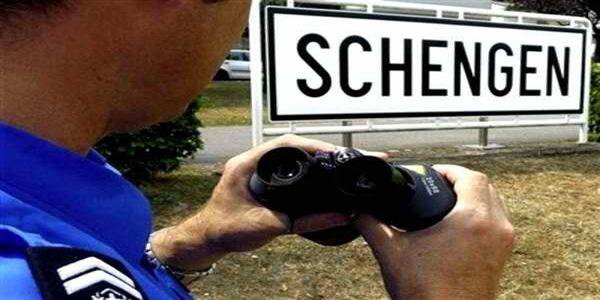
Single entry visa: exercise the right to enter once or twice, but for a period not exceeding 90 days. It should be remembered that with it the first entry rule necessarily applies, i.e. through the country that issued the visa.
Multiple visa: a citizen is granted the right of several entries to certain period. This period is marked on the visa.
They are: tourist (30 days, 1 and 2 years); educational (study time), business (5 years); guest and working (working hours or by invitation).
To grant Russian citizens the right to enter the Schengen area, the following list of documents must be drawn up:
- create a package of documents,
- pay a state fee of 35 Euro, persons under the age of 6 years are provided without money.
The situation with the Schengen agreement in connection with the flow of illegal immigrants
In connection with the aggravation of this situation in the countries that are parties to the agreement, passport control is in effect. It operates in Germany, Austria, France, Denmark, Sweden, Norway.

Hungary fenced itself off from Croatia, Serbia and Slovenia, so in these countries the question is raised about the application of additional security measures up to 2 years.
Towards EU membership/ Candidate countries
The main countries candidates for joining the European Union are:
- Spain
- Macedonia
- Serbia
- Turkey
- Montenegro
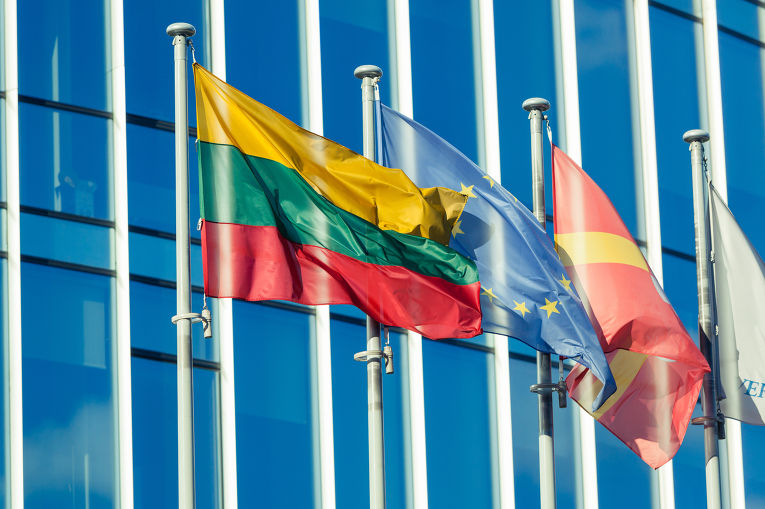
Potential Candidates
For countries that are not included in European Union, but tend to join it, include:
- Bosnia
- Herzegovina
UK and Ireland – separate visas required
These countries are included in the Schengen Agreement, but have reserved the right to carry out personal passport control on the territory of their country.
Until 2016, tourists visiting the UK were free to travel to Ireland. However, these conditions did not apply in reverse order.
Bulgaria, Romania and Cyprus are not included in the Schengen
Bulgaria and Romania have been preparing for the entry into the Schengen zone for 8 years. However, there are no clear dates for their entry yet.

Countries such as France, the Netherlands and Germany prevent the entry of Romania and Bulgaria. With the advent of 2016, the situation has not changed.
The planned entry date was the spring of 2016, but due to political repression by illegal immigrants, many note that this issue has not been resolved.
Croatia prepares to join the Schengen
2013 was marked by the fact that Croatia entered the EU zone. However, it is still missing from the Schengen Agreement.

This situation suggests that the national visa obtained in this country does not give the right to enter the Schengen area.
The original entry date was July 2015. However, the situation for 2016 shows that there are no changes on this issue either.
When planning trips to countries belonging to the Schengen area, it is necessary to clearly study the procedure for processing documents for issuing a visa, as well as the addresses and opening hours of embassies.
Before going to the embassy, it is necessary to analyze possible questions from the employees of this institution.
In advance, you should familiarize yourself with the competent authorities and the procedure for filing an appeal in case of refusal.
